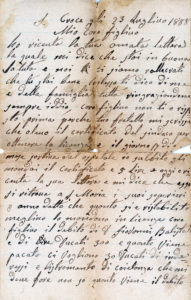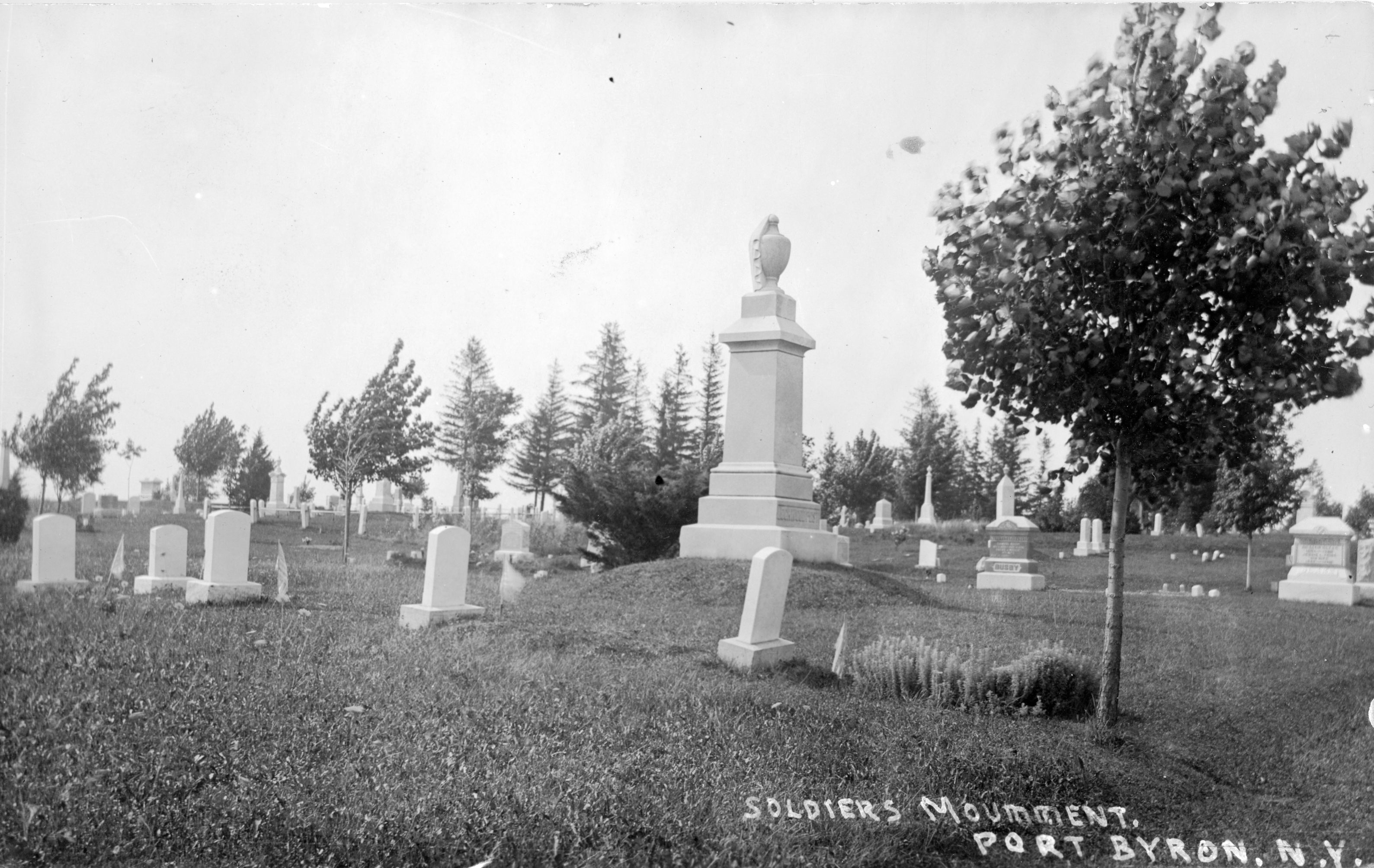(Note that this will be the Citizen Column for August 18th.)
It has been a bit since we had a historical society update and there has been a lot going on.
The image I have chosen is an mid nineteen-teens postcard view of the cemetery and the Soldiers Monument. Things looked much different then they do today. (You can also see this monument in our annual salute to Veterans post on Facebook, where the GAR group is gathered around.) This was part of a postcard collection donated by the Schasel family. Rene Schasel recently passed away, and quite happily for us, the family asked that the collection come home. We were so pleased to receive the collection of over 100 postcards, with many new, at least to us, images. This inspired me to go through the rest of the postcards in our archives and I have identified over 200 views of Port Byron throughout the years, and I know I don’t have all of them.
As I was sorting through, scanning, and indexing the postcards, I began to notice the great variety in paper, printing, the use of color and such things. On the Smithsonian website, I found the following history. In December 1901, the Postmaster-General issued order 1447 which allowed private printers to issue and sell postcards. However, any message from the sender had to be written on the front of the card, and not on the backside where the address was to be written. This explains why you will find postcards with smaller images and plenty of white space. These early postcards are called the undivided back cards and were in use between 1901 and 1907. In 1907, Congress and the Postmaster-General passed laws and acts that gave the sender the left half of the backside to write their message. What is called the divided-back postcard came into use. Also during this period, the the “real photos” cards began to be sold. If you see a postcard with a white border, it comes from the 1915 to 1930 period, as printers tried to save on ink costs. Around 1945, color postcards using the Photochrom process came into use and they are still printed today.
On many of these cards you can read simple messages home, letting the loved ones know when to expect the sender, or if they might be bringing someone with them. It is hard to believe that many times, a postcard could be mailed in the morning and be delivered that afternoon. For the times before the wide spread use of phones, they were instant communications. A picture history of the village and town using these views is now in the works.
We also received a large box with a fantastic collection from the Roberts family that has made our year. It has photos of the Roberts, Davis, Macy, Gutchess and other families. About half have been labeled with a name, which is so nice to have so we don’t have a box of missing persons. This has inspired us to think about how to create a Port Byron family tree and other web-based tools so that genealogical researches will know that we have these items. Our files are full of these little items that can help bring the past to life.
We had a very nice response to our yearly plea for members and many very nice donations. (Thank you letters will be going out soon!) When we sent out the newsletter, we had hoped that we would soon be moving to our new building in the business district. However, since we purchased the building in the tax auction, we were unable to get inside to see the condition. So when we finally got in, it was clear that we would not be moving soon as the construction of the new store next door had done some considerable damage to the building. So the Pine Street house will continue to serve as our headquarters until we can make the needed repairs.
As we continue to sort through the many files in the Society, we discovered a letter written in 1888. The letter from Giuseppe Vanditto to his son Pietro was written in Italian. With the help of a local Italian gentleman, we can now read the letter which was sent soon after Pietro had immigrated from Italy to Rochester in 1887. While there is little earth shaking news from home, we do learn some small tidbits like that Peter played the orgenetto to make extra money. This is not surprising as the entire family has always been quite musical. We also get to read a few words from Peter’s sister Maria Teresa, which goes to explain the naming of Peter’s daughters, Marie and Theresa.

The first of four pages written by Peter VanDetto’s father in 1888.
Just a note that we have files full of great little items that have been donated over the years. If you are doing your family history, stop in to check what might be hidden in the files.

One thought on “An Update on the Society”
A refreshing breath of remembrance!
Comments are closed.